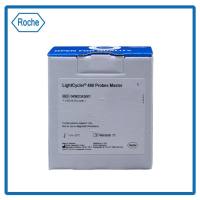Quantitative In Situ Hybridization Using Radioactive Probes to Study Gene Expression in Heterocellular Systems
互联网
互联网
相关产品推荐

SARS-CoV-2 (2019-nCoV) Spike Gene ORF cDNA clone expression plasmid (Codon Optimized)
¥4690

Roche 4887301001 LightCycler 480 Probes Master 10x 5ml 探针法实时定量试剂盒
¥13200

marA/marA蛋白//蛋白/Recombinant Shigella sonnei Transcriptional activator of defense systems (marA)重组蛋白
¥69

灰色链霉菌/灰色链霉菌/IMAS Study Class M4.3
¥1500

N-Butyldeoxynojirimycin,72599-27-0,film (dried <i>in situ</i>),阿拉丁
¥4326.90
相关问答
推荐阅读
Quantitative In Situ Hybridization Using Radioactive Probes in the Study of Gene Expression in Heterocellular Systems
Semiquantitative In Situ Hybridization Using Radioactive Probes to Study Gene Expression in Motoneuron Populations
Gene Expression Analysis by In Situ Hybridization: Radioactive Probes

